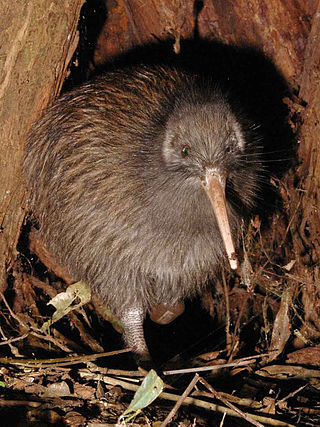
Kiwi are flightless birds endemic to New Zealand of the order Apterygiformes. The five extant species fall into the family Apterygidae and genus Apteryx. Approximately the size of a domestic chicken, kiwi are the smallest ratites.
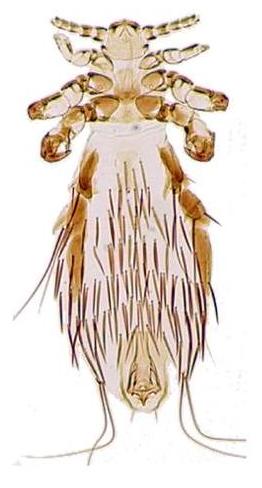
Louse is the common name for any member of the clade Phthiraptera, which contains nearly 5,000 species of wingless parasitic insects. Phthiraptera has variously been recognized as an order, infraorder, or a parvorder, as a result of developments in phylogenetic research.
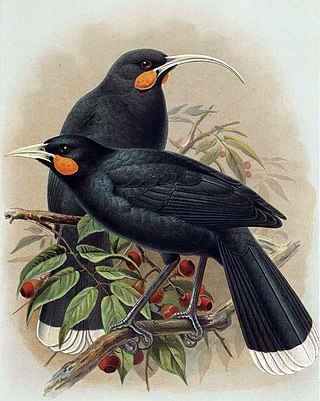
The huia is an extinct species of New Zealand wattlebird, endemic to the North Island of New Zealand. The last confirmed sighting of a huia was in 1907, although there was another credible sighting in 1924.
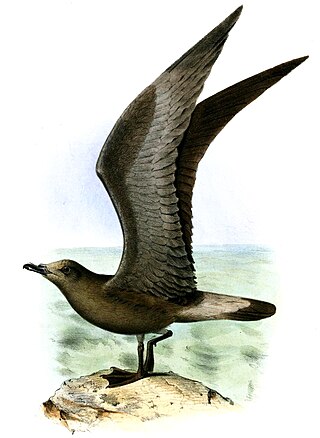
The Jamaican petrel is a small possibly extinct seabird in the gadfly petrel genus, Pterodroma. It is related to the black-capped petrel.

The Guadalupe caracara or mourning caracara is an extinct bird of prey belonging to the falcon family (Falconidae). It was, together with the closely related crested caracara, formerly placed in the genus Polyborus. It was also known as the quelili or the calalie.

The Auckland Island merganser, also known as the New Zealand merganser, was a typical merganser that is now extinct.
Coextinction and cothreatened refer to the phenomenon of the loss or decline of a host species resulting in the loss or endangerment of another species that depends on it, potentially leading to cascading effects across trophic levels. The term was originated by the authors Stork and Lyal (1993) and was originally used to explain the extinction of parasitic insects following the loss of their specific hosts. The term is now used to describe the loss of any interacting species, including competition with their counterpart, and specialist herbivores with their food source. Coextinction is especially common when a keystone species goes extinct.

The laughing owl, also known as whēkau, the jackass, or the white-faced owl, is an extinct species of owl that was endemic to New Zealand. Plentiful when European settlers arrived in New Zealand, its scientific description was published in 1845, but it was largely or completely extinct by 1914. The species was traditionally considered to belong to the monotypic genus Sceloglaux Kaup, 1848, although recent genetic studies indicate that it belongs with the boobook owls in the genus Ninox.

The South Island piopio also known as the New Zealand thrush, was a passerine bird of the family Oriolidae.
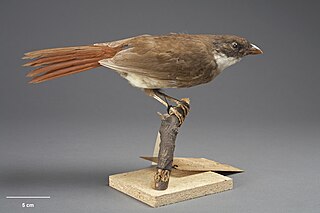
The North Island piopio was a passerine bird of the family Oriolidae. The North Island piopio is now considered to be extinct.

The Guadalupe storm petrel is a small seabird of the storm petrel family Hydrobatidae. It bred only on Guadalupe Island off Baja California, Mexico, and presumably ranged throughout the region. It has been assessed as Critically Endangered or possibly extinct.

The New Caledonian rail is a large and drab flightless rail endemic to the island of New Caledonia in the Pacific. It is Critically Endangered, may have gone extinct many decades ago already, and if it still exists it is one of the least-known living bird species.

The Philopteridae are a family of Ischnocera, chewing lice. They are parasitic on birds.
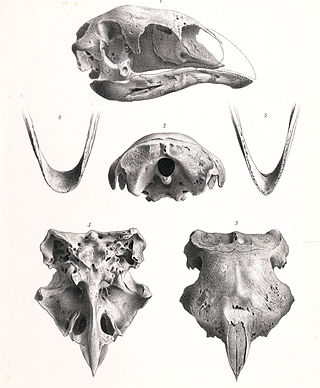
The broad-billed moa, stout-legged moa or coastal moa is an extinct species of moa that was endemic to New Zealand.
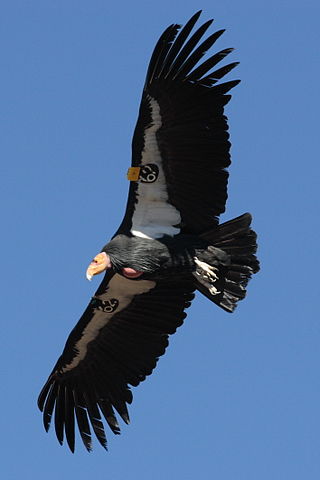
A large proportion of living species on Earth live a parasitic way of life. Parasites have traditionally been seen as targets of eradication efforts, and they have often been overlooked in conservation efforts. In the case of parasites living in the wild – and thus harmless to humans and domesticated animals – this view is changing. The conservation biology of parasites is an emerging and interdisciplinary field that recognizes the integral role parasites play in ecosystems. Parasites are intricately woven into the fabric of ecological communities, with diverse species occupying a range of ecological niches and displaying complex relationships with their hosts.
Columbicola extinctus, also known as the passenger pigeon chewing louse, is an extant species of phtilopterid louse. It was once believed to have become extinct with its only known host, the passenger pigeon, prior to its rediscovery living on band-tailed pigeons.
Conservation-induced extinction is where efforts to save endangered species lead to the extinction of other species. This mostly threatens the parasite and pathogen species that are highly host-specific to critically endangered hosts. When the last individuals of a host species are captured for the purpose of captive breeding and reintroduction programs, they typically undergo anti-parasitic treatments to increase survival and reproductive success. This practice may unintentionally result in the extinction of the species antagonistic to the target species, such as certain parasites. It has been proposed that the parasites should be reintroduced to the endangered population. A few cases of conservation-induced extinction have occurred in parasitic lice.

Rallicola is a genus of chewing louse. It is an ectoparasite of rails and other birds. It was named by Thomas Harvey Johnston and Launcelot Harrison in 1911. There are two subgenera aside from the nominotypical subgenus: Aptericola, whose species are found on kiwi birds, and Huiacola, a monospecific subgenus consisting of Rallicola extinctus, once found on the huia.

Apterygon is a genus of louse. It is endemic to New Zealand and is an ectoparasite of kiwi birds (Apteryx). Theresa Clay circumscribed the genus in 1961. In 1947, she had referred to this genus as "New Genus D", but it was not formally named as she needed to confirm the host of her specimen as well as additional material.
Hierodoris huia is a species of moth in the family Oecophoridae. It is endemic to New Zealand. It is only known from two sites in Titirangi that are approximately 1 to 2 km apart. H. huia is suspected to be a forest canopy-dweller. This species is on the wing in January. Although the adult moths are attracted to light it has been hypothesised that it is a diurnal species on the basis of the behaviour the species exhibit when light trapped. The species was named in honour of the extinct bird species, the huia, as well as the type locality of Huia Road, Titirangi. This species is classified as "Data Deficient" by the Department of Conservation.















